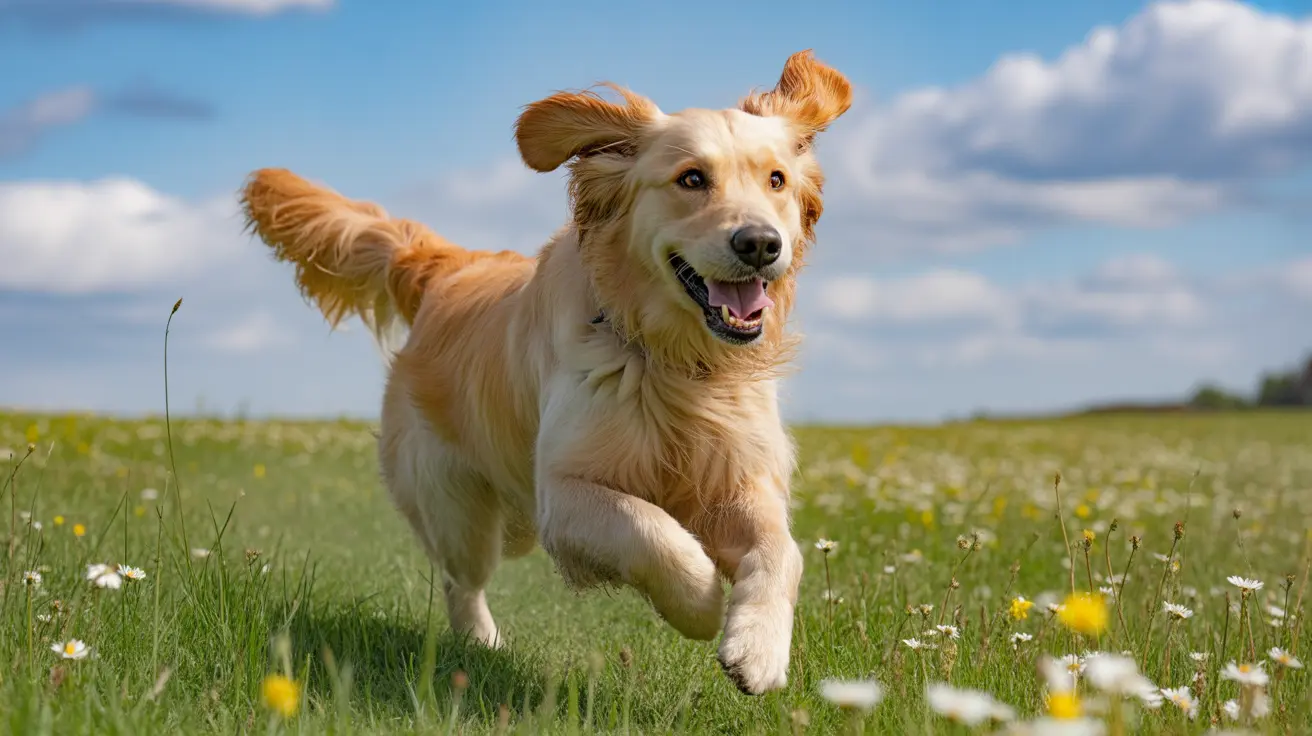Introduction
If you've ever wondered how fast a Golden Retriever can run, you might be surprised by their impressive athletic capabilities. These beloved family dogs aren't just friendly faces and wagging tails - they're remarkably swift athletes capable of reaching speeds that would leave most humans in the dust. Whether you're considering a running companion or simply curious about your Golden's capabilities, understanding their speed potential and athletic limits is essential for any owner.
Golden Retrievers typically achieve speeds between 20-30 miles per hour in short bursts, with exceptional athletes reaching up to 35 mph. This impressive velocity, combined with their natural endurance, makes them versatile athletes suited for various activities from casual jogging to competitive sports.
Understanding Golden Retriever Speed Capabilities
Golden Retrievers showcase remarkable athletic ability thanks to their muscular build and hunting heritage. Their powerful hindquarters and broad chest enable them to generate significant momentum, while their medium-length legs provide an ideal balance of speed and stability.
When comparing their speed to other breeds, Golden Retrievers stand out as relatively fast dogs, though not quite matching specialized racing breeds like Greyhounds. Their speed capabilities include:
- Sprint speed: 20-30 mph
- Sustained running pace: 6-12 mph
- Competition records: Up to 35.5 mph
Factors That Influence Running Speed
Age and Development
A Golden Retriever's speed varies significantly throughout their life stages. Puppies shouldn't engage in intensive running until their growth plates close around 18 months of age. Adult dogs in their prime (2-7 years) typically achieve the highest speeds, while senior dogs naturally slow down as they age.
Physical Condition
The running speed of a Golden Retriever heavily depends on their physical condition. Fit, well-exercised dogs maintain higher speeds and better endurance compared to overweight or sedentary pets. Regular exercise, proper nutrition, and weight management are crucial for maximizing their athletic potential.
Exercise Guidelines and Safety
To help your Golden Retriever maintain optimal running condition while preventing injury, consider these important guidelines:
- Start with gradual training programs
- Provide adequate warm-up time
- Choose appropriate running surfaces
- Monitor for signs of fatigue
- Ensure proper hydration
- Schedule regular veterinary check-ups
Competitive Activities and Sports
Many Golden Retrievers excel in competitive events that showcase their speed and agility. Popular activities include:
- AKC Fast CAT trials
- Agility competitions
- Dock diving
- Field trials
- Flyball
Frequently Asked Questions
How fast can a healthy adult Golden Retriever run in short bursts?
A healthy adult Golden Retriever can run between 20-30 mph in short bursts, with exceptional athletes reaching speeds up to 35 mph.
At what age is it safe to start running or jogging with a Golden Retriever?
It's safe to begin structured running or jogging when your Golden Retriever is fully mature, typically around 18 months of age, after their growth plates have closed.
How do factors like fitness and weight affect a Golden Retriever's running speed?
Fitness level and weight significantly impact speed - fit, lean dogs run faster and have better endurance than overweight ones. Regular exercise and proper weight management are essential for optimal performance.
Can Golden Retrievers keep up with humans during long-distance jogging or running?
Yes, Golden Retrievers can easily keep pace with human joggers, maintaining speeds of 6-12 mph over extended periods, making them excellent running companions.
What precautions should I take to protect my Golden Retriever's health while exercising?
Monitor for exhaustion, ensure proper hydration, choose appropriate running surfaces, avoid exercise in extreme temperatures, and maintain regular veterinary check-ups to prevent injury.
Conclusion
Golden Retrievers prove themselves to be impressive athletes capable of significant running speeds while maintaining the endurance needed for various activities. Understanding their capabilities and limitations helps owners provide appropriate exercise opportunities while ensuring their safety and well-being. With proper training and care, these versatile dogs can be excellent running companions and successful competitive athletes.






